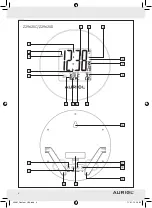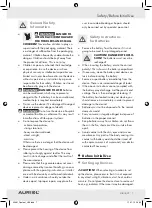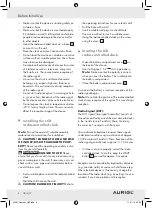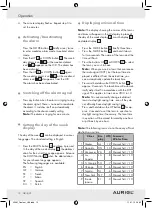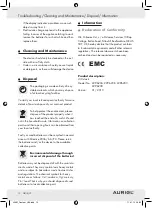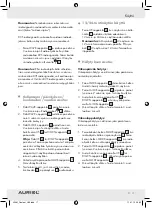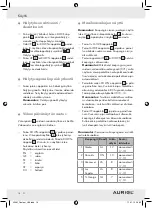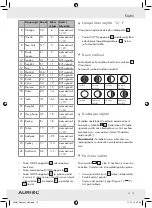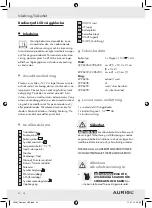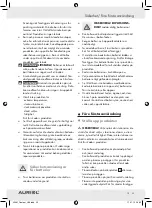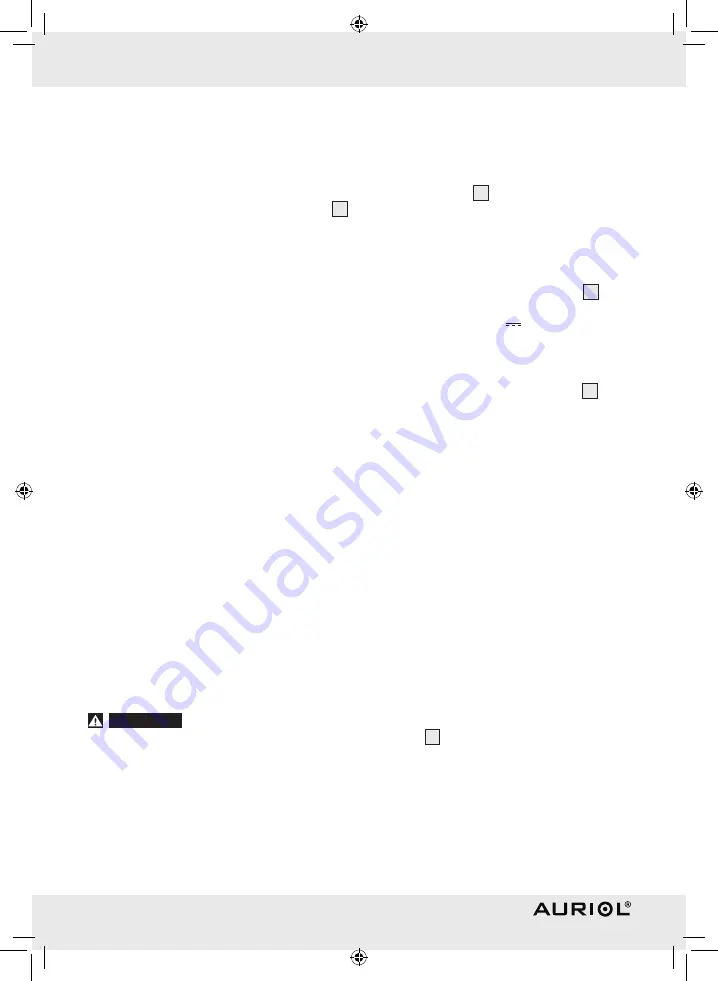
8 GB/IE/CY
Before Initial Use
j
Make sure that the device is standing safely on
a stable surface.
j
Make sure that the device is mounted properly
if installed on a wall. A falling clock could injure
people or cause damage to the device itself or
to other objects.
j
Stand the radio-controlled clock on its base
19
or mount it on the wall.
j
Place the clock on a level, horizontal surface.
j
Do not stand the device on valuable or sensitive
surfaces without suitable protection. The surface
may otherwise be damaged.
j
Do not place the device anywhere near to sources
of interference such as televisions, computers,
thick walls, etc. These may hinder reception of
the radio signal.
j
Do not use the clock in reinforced concrete
buildings, e. g. airports, high-rises, factories or
basements. This can seriously disrupt reception
of the radio signal.
j
Do not start radio reception in a moving vehicle,
e. g. car or train. Reception of the radio signal
by the device can disrupt the vehicle electronics.
j
Do not expose the clock to temperatures below
--20°C for any length of time. This can seriously
affect the reception range of the device.
Q
Installing the LCD
radio-controlled clock
note:
You will need a drill, suitable assembly
material and a screwdriver for installation.
m
CaUTIOn! DangEr TO LIFE anD rISK
OF InJUrY; rISK OF DaMagE TO PrOP-
ErTY!
Please read the operating and safety instruc-
tions for your drill carefully.
WarnIng!
DangEr TO LIFE!
Please
ensure that you do not drill into any electrical wiring,
gas or water pipes in the wall. If necessary, carry out
checks with a wire, pipe and stud detector before
you drill into a wall.
j
Find a suitable place to install the radio-controlled
clock.
j
Mark the drill hole on the wall.
m
CaUTIOn! DangEr OF InJUrY!
Refer to
the operating instructions for your electric drill.
j
Drill the hole with a drill.
j
Insert a suitable wall plug into the drill hole.
j
Use a screwdriver to insert a suitable screw.
j
Hang the radio-controlled clock on the screw
using the mount
16
.
Q
Starting the LCD
radio-controlled clock
j
Open the battery compartment cover
20
on
the back of the device.
j
Insert a Mignon 1.5 V / AA type battery.
note:
Make sure that the polarity is correct
when you insert the battery. This is indicated in
the battery compartment.
j
Close the battery compartment cover
20
.
As soon as the battery is inserted, reception of the
radio signal begins.
note:
Do not alter the position of the radio-controlled
clock during reception of the signal. This may disrupt
reception.
radio Signal (DCF):
The DCF signal (time signal transmitter) consists of
time pulses emitted by one of the most accurate clocks
in the world close to Frankfurt / Main, Germany –
this varies by 1 second in a million years.
Your radio-controlled clock receives these signals
under ideal conditions up to a distance of approx.
1,500 km around Frankfurt / Main. Reception of the
radio signal generally takes approx. 3 - 10 minutes.
j
If it does not work properly, restart the radio-
controlled clock. To do this, keep the WAVE
button
21
pressed for approx. 3 seconds.
Reception can be considerably impaired by obstacles
(e.g. concrete walls) or sources of interference (e.g.
other electrical devices). If necessary, change the
location of the radio clock (e.g. by putting it near a
window) if you have problems with reception.
45981_Content_LB3.indd 8
11.01.10 08:35


